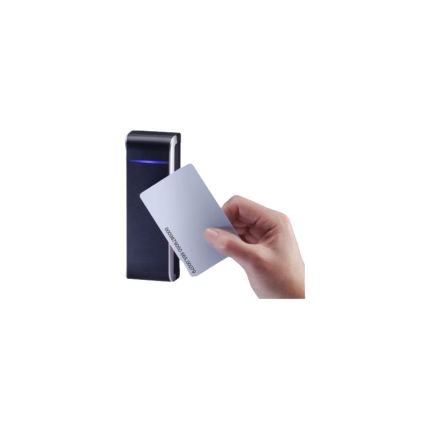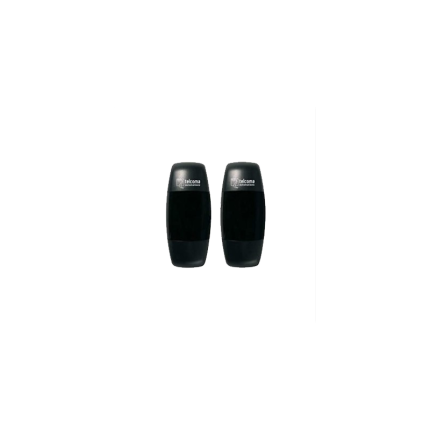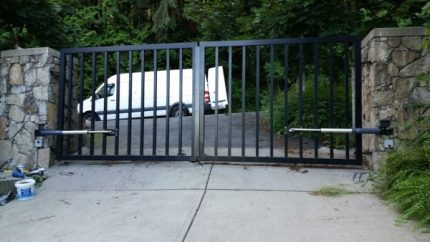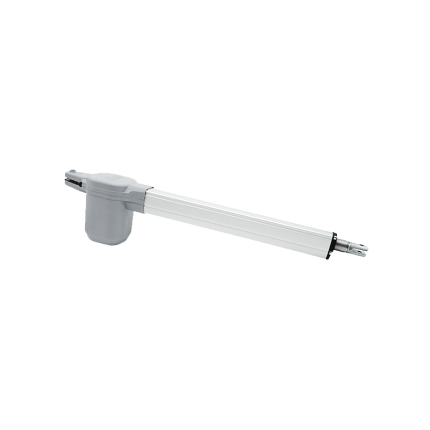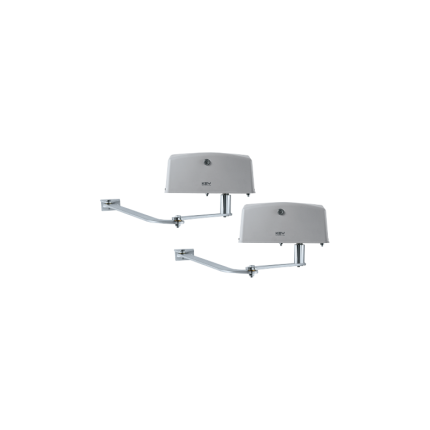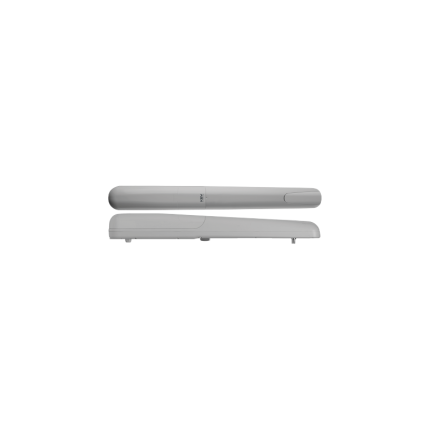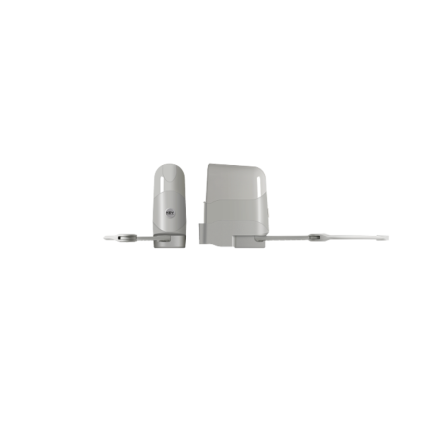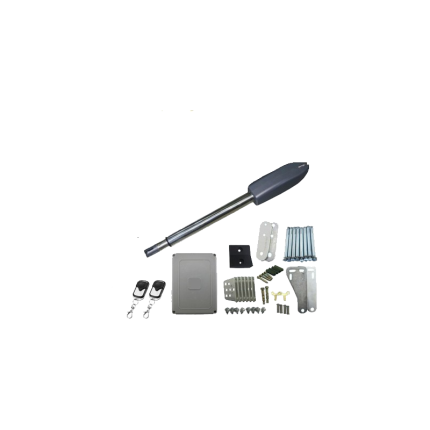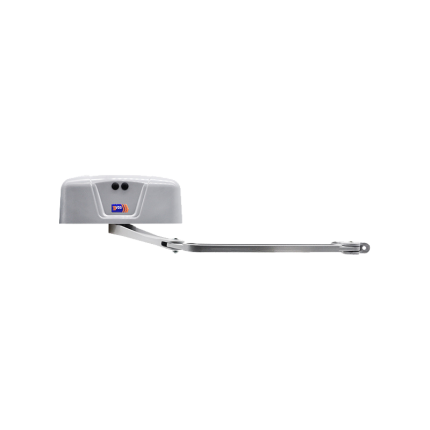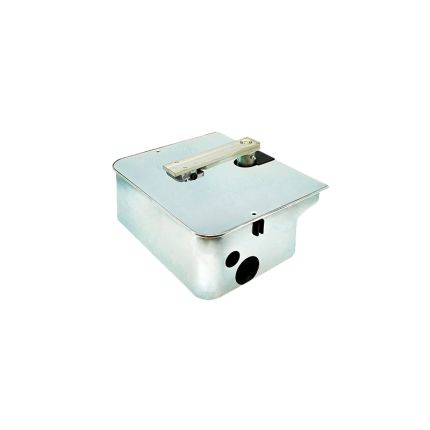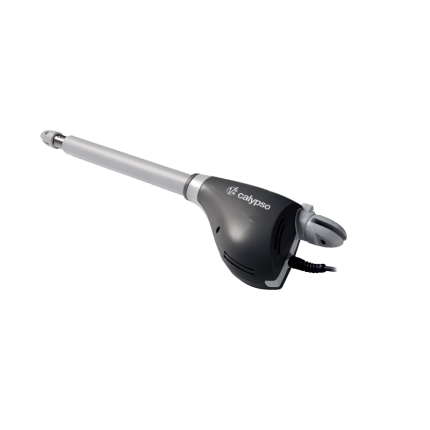Royal gates
RFID Card Access Control
Ship or pick up from our office.
RFID Card Access Control
RFID card access control is a system that uses Radio Frequency Identification (RFID) technology to manage and control access to physical spaces. It provides a secure and convenient way to grant or deny entry to authorized individuals, replacing traditional keys or swipe cards. This system works by wirelessly communicating between an RFID card (or tag) and an RFID reader. How it Works- RFID Card (Tag): Each authorized individual carries an RFID card, key fob, or even a smartphone with an embedded RFID chip. This chip contains a unique identification code and sometimes other encrypted data.
- RFID Reader: Readers are installed at entry points (doors, gates, elevators, etc.). They constantly emit a radio frequency field.
- Communication: When an RFID card enters the reader's field, the card's antenna captures energy from the reader's signal. This energizes the microchip on the card, allowing it to transmit its unique data back to the reader.
- Data Verification: The RFID reader decodes the information from the card and sends it to a central access control server or control panel. This server compares the card's data with a secure database of authorized users and their access permissions.
- Access Grant/Denial: If the credentials match an authorized profile, the system sends a signal to an electronic lock mechanism, allowing entry. If not, access is denied. This entire process typically happens in milliseconds.
- Audit Trail: The system also records detailed access information, including the time, date, and specific access point used, providing a valuable audit trail for security purposes.
- RFID Cards/Tags: These are the credentials held by users, typically in the form of plastic cards, key fobs, or even integrated into mobile devices. They contain a microchip and an antenna.
- RFID Readers (Interrogators): Devices installed at entry points that emit radio waves to communicate with the tags and read their data.
- Access Control Panel/Server: This is the "brain" of the system. It receives data from the readers, verifies user credentials against a database, and controls the electronic locks. It can be cloud-based or local.
- Electronic Locks: Devices that secure the entry points and are controlled by the access control system (e.g., magnetic locks, electric strikes).
- Access Control Software: Software used to manage user profiles, set access levels, monitor events, and generate reports.
- Passive RFID Tags: Most common for access control. They don't have an internal battery and are powered by the electromagnetic field emitted by the reader. They have a shorter read range (a few centimeters to a meter).
- Active RFID Tags: These tags have their own power source (battery), allowing for a much longer read range (up to several hundred meters) and the ability to broadcast signals periodically. They are typically more expensive.
- Semi-Passive RFID Tags: These tags have a battery to power the chip but only transmit data when activated by a reader's signal, offering improved sensitivity and performance over passive tags.
- Convenience: Offers contactless and keyless entry, making it fast and easy for users to gain access. Cards can often be read from inside a wallet or bag.
- Enhanced Security: Provides unique identification and can utilize encrypted communication, making tags difficult to duplicate. Lost cards can be immediately deactivated, preventing unauthorized use.
- Efficiency: Streamlines entry and exit processes, reducing wait times, especially in high-traffic areas.
- Flexibility & Scalability: Easily allows for adjusting access permissions for different users, areas, or time frames. Systems can be expanded or modified as needs change.
- Integration: Can be integrated with other security systems like CCTV, alarms, and time attendance systems for comprehensive security management.
- Audit Trails: Provides real-time tracking of who enters and exits, offering valuable data for security monitoring and incident investigation.
- Durability: RFID components generally experience less wear and tear compared to traditional mechanical locks or swipe card systems.
- Skimming: In theory, unauthorized readers could attempt to read card information if they get close enough, though modern RFID cards often use one-time codes and encryption to mitigate this risk.
- Cloning: If the security protocols are weak, an RFID card's information could potentially be cloned.
- Electromagnetic Interference: Other electronic devices or metal/liquid objects can sometimes interfere with RFID signals, impacting performance.
RFID Tag Access Control
Ship or pick up from our office.
RFID Tag Access Control
RFID Tag Access Control is a system that uses Radio Frequency Identification (RFID) technology to manage and control access to physical spaces or logical systems. It allows only authorized individuals or items to enter secure areas by wirelessly reading data stored on RFID tags. Think of it as a modern, electronic key system where your "key" is an RFID tag (like a card or key fob) and the "lock" is an RFID reader. How it Works ⚙️ The fundamental principle is straightforward:- RFID Tag/Credential: Each authorized individual or item is assigned an RFID tag. This tag contains a microchip that stores a unique identification code and an antenna.
- RFID Reader: A reader (also called an interrogator) is installed at the access point (e.g., a door, gate, or turnstile). The reader emits radio waves.
- Communication: When an RFID tag comes within range of the reader's radio waves, the tag's antenna captures energy from the reader's signal (for passive tags) or uses its own power source (for active tags) to activate its microchip. The tag then transmits its unique data back to the reader.
- Data Processing: The reader decodes the information from the tag and sends it to a central access control software or system.
- Authentication and Decision: The software compares the tag's unique ID with a database of authorized users and their assigned permissions. If the ID is valid and the user has permission to access that specific area at that time, the system sends a signal to unlock the door, open the gate, or grant access. If not, access is denied.
- Logging: The system typically logs every access attempt (both granted and denied), providing an audit trail for security monitoring and compliance.
- RFID Tag Access Controls/Credentials: These are the physical devices carried by users. They come in various forms, such as:
- Cards: Similar to credit cards, commonly used for employee badges or hotel key cards.
- Key Fobs: Small, convenient devices attached to keychains.
- Wristbands: Often used in recreational facilities or for events.
- Stickers/Labels: Can be affixed to items or vehicles.
- Mobile Credentials: Increasingly, smartphones can act as RFID tags through NFC (Near Field Communication), a subset of HF RFID.
- RFID Readers: Devices that emit radio waves to energize and read data from RFID tags. They can be fixed (at entry points) or mobile (handheld scanners).
- Antennas: Integral to the reader (or external), they transmit and receive radio signals to and from the tags. The antenna design influences the read range and reliability.
- Access Control Software/Management System: The "brain" of the system. This software manages user databases, assigns access permissions, logs events, and allows administrators to configure and monitor the system remotely.
- Access Control Panel/Controller: Hardware that connects the readers to the central software, processing data and controlling the locking mechanisms.
- Passive RFID Tags:
- Do not have an internal power source.
- They draw power from the radio waves emitted by the reader to operate.
- Are generally smaller, less expensive, and require no maintenance.
- Have a shorter read range (a few centimeters to a few feet).
- Most commonly used in access control for cards and key fobs.
- Active RFID Tags:
- Have their own internal power source (battery).
- Can transmit data over longer distances (up to several hundred meters) and at regular intervals.
- Are larger and more expensive.
- Often used for long-range applications like vehicle tracking or asset management.
- Semi-Passive RFID Tags (Battery-Assisted Passive - BAP):
- Contain a battery to power the microchip, but still rely on the reader's signal to initiate communication.
- Offer better read range and performance than passive tags, without continuously transmitting like active tags.
- Low Frequency (LF) RFID (125-134 kHz):
- Short read range (1-10 cm).
- Less susceptible to interference from metal and water.
- Common in traditional access control systems.
- High Frequency (HF) RFID (13.56 MHz):
- Moderate read range (10 cm-1 meter).
- Widely used for access control, ticketing, and Near Field Communication (NFC) applications (like smartphone taps).
- Ultra-High Frequency (UHF) RFID (300 MHz-3 GHz, often 860-960 MHz for RAIN RFID):
- Long read range (up to 12 meters).
- More susceptible to interference from liquids and metals.
- Used in applications requiring longer read distances, such as vehicle access control or large-scale inventory tracking.
Safety sensor VEDO180
Ship or pick up from our office.
Safety sensor VEDO180
*NO/NC *AC/DC 12-24 V *Receiving Range: 25 Meters *IP 44Single Swing Driveway Gate, Picket Design, 12 ft
Ship or Pick up from our showroom at #100, 11538 132A Street, Surrey, BC.
Single Swing Driveway Gate, Picket Design, 12 ft
- Aluminum Picket design single swing driveway gate
- Gate Package Includes: 1 x driveway gate panel, 2 x steel gate posts (8' H by 4" x 4" each), 2 x Heavy duty adjustable steel hinges
- Material: Aluminum Tube Framing, Aluminum pickets with a black powder paint coating
- Gate Dimensions: 12' W x 6' H.
- No hidden fees
Single swing gate opener – VDS EGO24
Ship or pick up from our office.
Single swing gate opener - VDS EGO24
*Suitable gate weight: Maximum 200 Kg Included:- 1 x Electromechanical arm
- 1 x Main control board
- 1 x Waterproof box
- 2 x Remote control
- 1 x Safety sensor
- 1 x Manual release key
Single swing gate opener -Key Automation KSN5024
Ship or pick up from our office.
Product Sheet PDFSingle swing gate opener -Key Automation KSN5024
Included: *1 x Electromechanical articulated arm *1 x Main control board *2 x Remote control *1 x Manual release key *1 x Safety sensorThe Key Automation KSN5024 is a 24V DC powered articulated swing gate opener designed for single swing gates.
It is suitable for gates up to 3 meters in length and is equipped with an encoder for position feedback and safety features.
This opener is part of a line of gate automation products offered by Royal Electronics Technology Center Co..
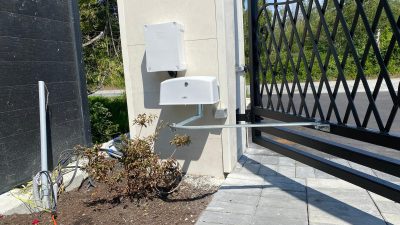
Key Automation KSN5024
- Type: Articulated swing gate opener, meaning it uses a hinged arm to move the gate.
- Power: 24V DC.
- Encoder: Provides feedback on the gate's position, allowing for precise control and safety features.
- Gate Length: Suitable for gates up to 3 meters long.
- Applications: Designed for residential or commercial swing gates, and can be configured for inward or outward opening.
- Additional Features: Royal Electronics Technology Center Co. mentions safety photocells and key selectors as possible optional features.
Single swing gate opener -Key Automation RAY2224
Ship or pick up from our office.
Product Sheet PDFSingle swing gate opener -Key Automation RAY2224
*Suitable gate weight: Maximum 500 Kg Included: *1 x Electromechanical arm *1 x Main control board *1 x Waterproof box *2 x Remote control *1 x Set safety sensor *1 x Manual release keySingle swing gate opener -Key Automation REP2224
Ship or pick up from our office.
Product Sheet PDFSingle swing gate opener -Key Automation REP2224
Included: *1 x Electromechanical articulated arm *1 x Main control board *2 x Remote control *1 x Manual release key *1 x Safety SensorThe Key Automation REP2224 is an articulated swing gate opener designed for gates up to 2.3 meters (approximately 7.5 feet) in length.
It's a 24V DC motor, making it suitable for various applications like residential, commercial, and industrial swing gates.
The opener is known for its compact design, quiet operation, and ability to fit in narrow mounting spaces.
Key Features and Characteristics:
- Type: Articulated swing gate opener.
- Power: 24V DC motor.
- Gate Length: Suitable for gates up to 2.3 meters (7.5 feet).
- Application: Residential, commercial, and industrial swing gates.
- Design: Compact, quiet, and suitable for narrow spaces.
- Control: Typically controlled by a control board that receives signals from remote controls, keypads, or other access control systems.
- Safety: May include safety features like obstruction detection to prevent injury or damage.
- Emergency Release: May feature an emergency release mechanism for manual operation during power outages.
Additional Details:
- The REP2224 is part of the Key Automation range of swing gate openers, which also includes models like the RAY2224, offering different features and capabilities according to ster-tronic.
- The control unit (CT20324) for the REP2224 is part of the system, and there are various accessories available, such as safety sensors and remote controls.
- The opener can be integrated with access control systems for keypads, remote controls, and other methods of controlling access.
- It's important to note that installation of gate openers should be done by qualified professionals.
Single swing gate opener -Royalgate RGSW700
Ship or pick up from our office.
Single swing gate opener -Royalgate RGSW700
*Suitable gate weight: Maximum 150 Kg Included: *1 x Electromechanical arm *1 x Main control board *1 x Waterproof box *2 x Remote control *1 x Set safety sensor *1 x Manual release keyA single swing gate opener is a mechanical device designed to automate the opening and closing of a single, solid gate that swings open on a hinge, typically for driveways or entrances.
It consists of a motor and an opening mechanism, often with a control unit, that allows the gate to swing open and closed with the push of a button or remote control, rather than manually.
Key features and considerations:
-
Single Panel:Unlike double swing gates that have two panels meeting in the middle, a single swing gate has one large panel that swings open in a single direction.
-
Space Requirements:Single swing gates require sufficient space behind the gate for it to swing open fully without obstruction.
-
Installation:Single swing gate openers can be installed on various gate types, including steel, wood, vinyl, and chain-link.
-
Motor Types:Common motor types include those that are:
- In-ground: Motors are installed beneath the ground, providing a cleaner look.
- Arm-mounted: Motors with arms that extend to push or pull the gate.
-
Applications:Single swing gate openers are suitable for residential and commercial properties, offering convenience and security.
-
Safety Features:Many openers include safety mechanisms like soft start and stop, and sensors to prevent the gate from hitting obstacles.
-
Dual Functionality:Some openers are designed to handle both single and double swing gates, providing flexibility.
Single swing gate opener -VDS Articulated
Ship or pick up from our office.
Product Sheet PDFSingle swing gate opener -VDS Articulated
*Suitable gate weight: Maximum 800 Kg Included: *1 x Electromechanical articulated arm *1 x Main control board *1 x Waterproof box *2 x Remote control *1 x Set safety sensor *1 x Manual release keySingle swing gate opener -VDS Underground RG110
Ship or pick up from our office.
Product Sheet PDFSingle swing gate opener -VDS Underground RG110
*Suitable gate weight: Maximum 500 Kg Included: *1 x Electromechanical motor *1 x Foundation box *1 x Main control board *1 x Waterproof box *2 x Remote control *1 x Set safety sensor *1 x Manual release keySingle swing gate opener –V2 Calypso
Ship or pick up from our office.
Product Sheet PDFSingle swing gate opener –V2 Calypso
*Suitable gate weight: Maximum 400 Kg Included: *1 x Electromechanical arm *1 x Main control board *1 x Waterproof box *2 x Remote control *1 x Set safety sensor *1 x Manual release key
Here's a more detailed breakdown:
- Types: The Calypso is available in single and double gate versions.
- Motor: It uses a 230v electromechanical actuator.
- Construction: The actuator features a stainless steel shaft and a die-cast aluminum frame.
- Release System: It includes a practical release system for manual operation.
- Gate Size: The 400 version is for gates up to 2.5 meters, the 500 for up to 3 meters, and the 600 for up to 4 meters per leaf.
- Weight Capacity: The 400 version supports gates up to 400kg, the 500 up to 500kg, and the 600 up to 600kg.
- Typical Kit: A double gate kit includes two Calypso motors, a control panel (like the City1-evo), a receiver, photocells, and remotes.

